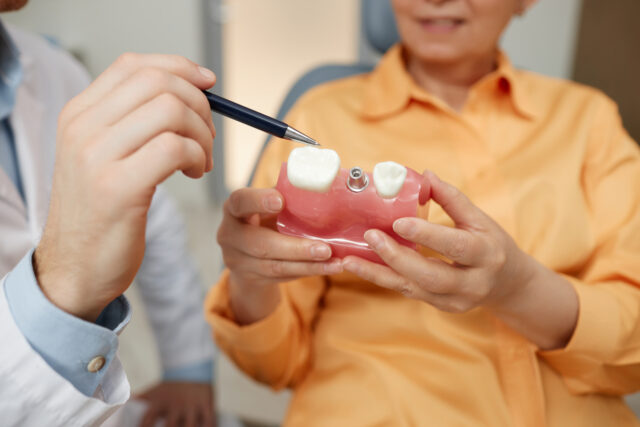Dental implants are one of the most reliable and transformative tools in modern dentistry. They offer patients a durable, functional, and aesthetic replacement for missing teeth. But even with cutting-edge techniques and biomaterials, failures still happen — and often within the first two years. A recent study published in Biomolecules and Biomedicine sheds light on the biggest culprits behind these failures and offers data-driven insights every clinician should consider. We’ve boiled it down so you don’t have to.
Smoking, Still the Biggest Saboteur
Let’s start with the obvious: smoking. The study of 300 patients found a clear and statistically significant link between post-op smoking and implant failure. It’s not new information, but the reminder is critical. Smoking impairs vascularization, slows healing, and compromises osseointegration. You know this, but patients often don’t understand just how directly their habit undermines a four-figure treatment investment.
Preoperative smoking cessation protocols should be non-negotiable. Include it in your consent process, document it, and revisit the conversation at every step, from consult to post-op.
Anterior Implants: Where Aesthetics Meet Risk
The study found that implants placed in the anterior region failed more often than those in the posterior. That’s a clinical red flag. The thinner cortical bone, less keratinized tissue, and greater aesthetic demand already make these cases tricky. Add concentrated occlusal forces from parafunctional habits or compromised bite dynamics, and you’ve got a recipe for trouble.
Anterior implant planning must go beyond standard imaging. Cone-beam CT, digital occlusal analysis, and even mock-up guided placement can offer insights that minimize risk. For higher-risk cases, consider staged approaches or grafting to boost bone volume and mucosal stability.
Hygiene: The Patient Variable You Can Influence
Poor oral hygiene continues to be one of the most modifiable but overlooked risk factors. The study reinforces that insufficient hygiene post-placement significantly increases failure risk, especially in multi-unit cases.
You need a hygiene protocol tailored to implant patients. That means customized recall intervals, professional maintenance techniques that avoid damaging the implant surface, and patient-specific oral hygiene instruction. Don’t just delegate it, own it!
Tissue and Bone: The Silent Contributors
The findings underscore the importance of sufficient bone volume and keratinized mucosa. While not always apparent clinically, these variables are critical for long-term implant success. Inadequate volume can compromise primary stability and integration. A lack of keratinized tissue invites inflammation, recession, and peri-implantitis.
These aren’t just surgical concerns. Restoratively driven planning should include mucogingival analysis. If you’re not assessing tissue biotype and width early, you’re missing a crucial predictor. Soft-tissue augmentation, whether pre- or post-implant, should be on the table when conditions are suboptimal.
The Future of Implantology
Perhaps the most compelling insight from the study is the development of a predictive model to flag high-risk patients preoperatively. While still evolving, these data-driven tools could reshape how we assess implant candidacy. Think of it like a surgical risk calculator, only personalized for implantology.
Until then, clinicians need to act as their own algorithms. Take the data seriously. Start stratifying patients based on behavioral, anatomical, and systemic risk factors. Document your rationale, tailor your plan, and adjust your follow-up accordingly.
What’s Coming Next
The study also points to innovations on the horizon: bioactive coatings, antimicrobial surfaces, and 3D-printed implants. These could enhance integration and reduce infection rates, but they’re not yet widely available or cost-effective.
Still, staying updated on emerging tech is essential. Not just for future adoption, but to answer the increasingly informed questions your patients are going to bring.
Optimize What You Control
The implant failure rate in the study was relatively low, just 5.67% over two years. But even a small percentage means real consequences for your patients and your practice. The majority of failures weren’t due to bad luck. They were predictable. And preventable.
Focus on the factors you control: patient education, surgical precision, soft tissue management, and individualized risk profiling. The more you align with evidence like this, the fewer failures you’ll have to explain later.
Dentistry 411 will continue to track the science, the products, and the legal landscape so you don’t have to. Subscribe to stay ahead of the curve, cut through the marketing, and make smarter decisions in your dental practice.
SOURCES: Biomolecules and Biomedicine, Medical Xpress





